Bigleaf Magnolia (Magnolia macrophylla) is a striking deciduous tree known for its enormous leaves and showy flowers. A member of the Magnoliaceae family, this species is native to the Caribbean, Mexico, and the southeastern United States, including North Carolina. Unlike the more commonly seen magnolias with their glossy, deep green foliage, the bigleaf magnolia stands out with its oversized, bright green leaves, giving it a distinctive appearance in the landscape. Though not as widely planted as other magnolia species, it remains an impressive choice for gardens and naturalized settings, offering a bold, tropical-like presence in temperate climates.
| Common name | Bigleaf Magnolia, Great-leaved Macrophylla, Large-leaved Cucumber Tree, Umbrella Tree |
| Botanical name | Magnolia macrophylla |
| Family | Magnoliaceae |
| Species | macrophylla |
| Origin | Caribbean, Mexico, southeastern United States, NC |
| Life cycle | Woody |
| Plant type | Native Plant |
| Hardiness zone | 5, 6, 7, 8 |
| Sunlight | Full Sun |
| Maintenance | Low |
| Soil condition | High Organic Matter |
| Soil ph | Acid |
| Drainage | Well-Drained |
| Growth rate | Slow |
| Spacing | 24 – 60 ft. |
| Harvest time | Fall |
| Flowering period | Spring |
| Height | 3- 40 ft. |
| Width | 3- 40 ft. |
| Flower color | Cream, Tan |
| Leaf color | Gray, Silver |
| Fruit color | Burgundy, Red |
| Stem color | Brown, Copper |
| Fruit benefit | Showy |
| Leaf benefit | Showy |
| Flower benefit | Fragrant |
| Garden style | Native Garden |
| Uses | Lawn |
I. Appearance and Characteristics
Magnolia macrophylla, the bigleaf magnolia, is a deciduous magnolia native to the southeastern United States and eastern Mexico. This species boasts the largest simple leaf and single flower of any native plant in North America.
Bigleaf magnolia is found in rich mesic woods; any disturbance that lets more light reach the ground is beneficial to the establishment of bigleaf magnolia, but despite its relatively fast growth-rate when stimulated by more light, other understory and canopy trees/seedlings are usually able to outgrow and out-compete it.
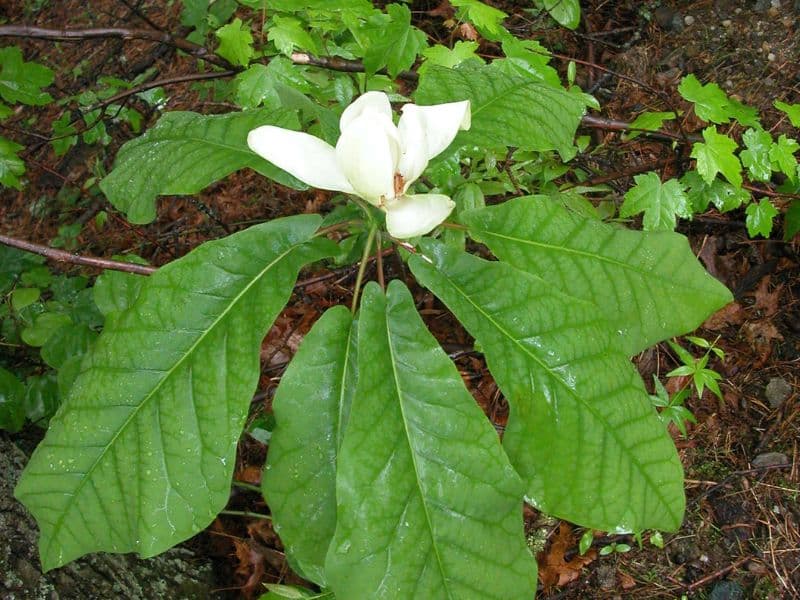
This suits the plant just fine as it is tolerant of low light levels; it does not need full sun to survive once established (however, it does not tolerate full shade). Natural regeneration is quite limited due to the scarcity of mature, seed-bearing plants and the fact that this tree’s population mostly consists of widely scattered individuals. In addition, this species is plagued by poor seed set (most likely from limiting factors mentioned above) and low seed viability, a trait shared by its cousin and frequent associate in the wild in Appalachia, the Fraser magnolia.
The bigleaf magnolia is a medium-sized understory tree 50–65 feet tall. This species is distinguished from other magnolias by the large leaf size, 10–32 inch long and 4–35 inch broad. The largest leaf to be reported by a credible source is 3 ft 8 in (110 centimeters) in length. in addition to a six inch (15 centimeter) petiole. The leaf’s width can be up to eighteen inches (45 centimeters). The tree’s branches often bend under the weight of this heavy foliage.
The flowers are typically six or nine-petaled (two or three whorls of three petals each, the larger ones with a dime-sized purple blotch at the base). The flower has as many as 580 stamens and is typically about sixteen inches (41 centimeters) wide, although there have been specimens as large as 21.5 inches (55 centimeters) in width. It is the largest temperate (non-tropical) flower in the world. This, like all Magnolias, is beetle pollinated.
The fruit is a cone-like cluster of achenes. The mature seeds, each covered with an orange aril, hang down from the cone on silk-like threads. making themselves readily available to passing birds.
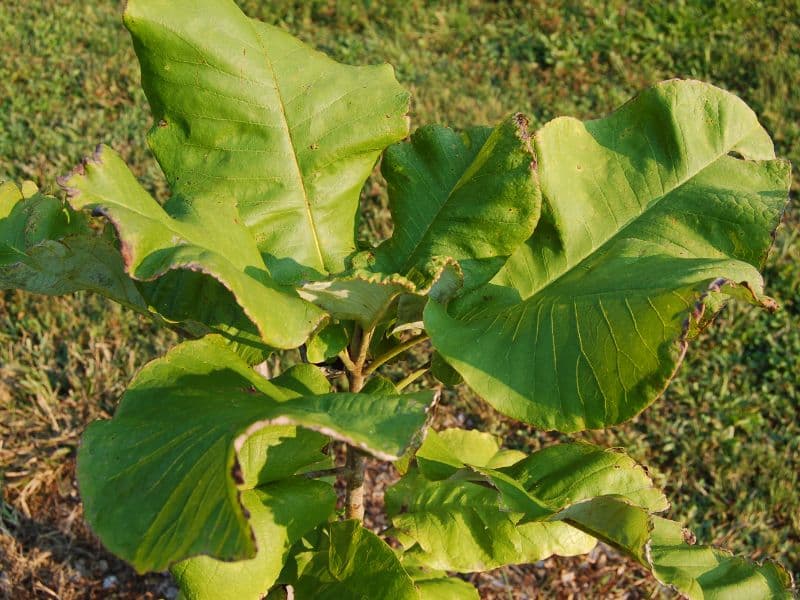
Bigleaf magnolia is often short-lived under cultivation unless its rather demanding requirements are met. This tree likes loose, undisturbed rich mesic soil (or mulch and compost substitutes) in full sun or part shade with moist, well-drained soil and a low pH. This tree will likely succeed in sites that closely mimic its natural habitat and where it is protected from strong wind that can tatter its large foliage. It can be grown farther north than its southerly range suggests, but needs watering during extended dry periods. This plant is generally problem-free.
II. How to Grow and Care
Sunlight
The positioning of your bigleaf magnolia is also an important consideration. Despite being able to cope with cooler climates, they will prefer a sunny spot in the garden with some partial shade for protection during the summer months.
Temperature and Humidity
Bigleaf magnolias thrive in moderate to warm temperatures. Areas with extreme heat can encourage early flowering buds, damaging the potential for healthy blooms. Alternatively, places with colder temperatures will prevent trees from developing buds. Since bigleaf magnolias have large leaves, protecting these trees from harsh weather conditions such as high winds is critical. Adding a layer of mulch can help maintain an average-temperature environment surrounding the trees.
Watering
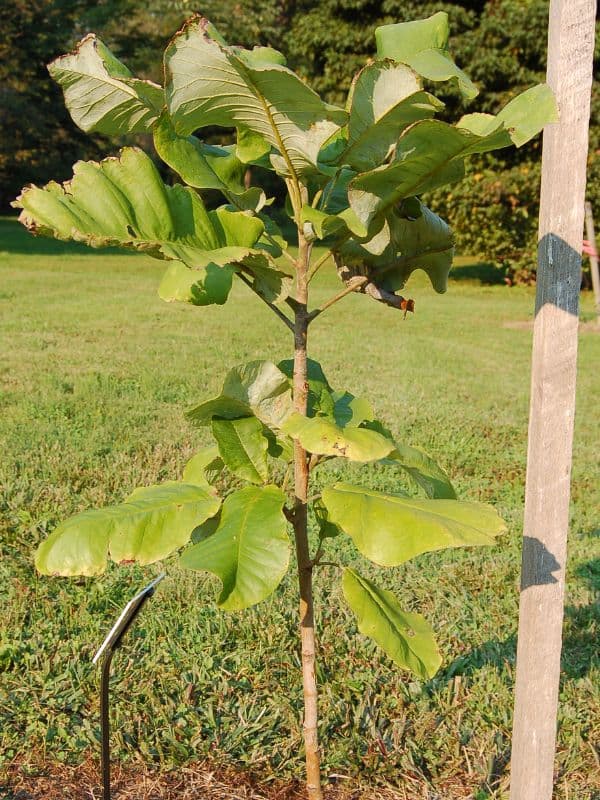
Balance is essential when watering bigleaf magnolias—too much or too little will prevent the tree from developing healthy foliage and blooms, leaving it susceptible to disease. Use your hands to feel the top inch of soil surrounding the tree to determine whether or not it is time for more water. The ground should remain moist and should use well-draining soil.
Soil
Bigleaf magnolias grow best in moist, organically rich soils that are well-draining and loamy. It does not tolerate soils that are too dry or wet. Similar to its native woodlands, the bigleaf magnolia grows best in areas with a slightly acidic to neutral soil pH.
Fertilizing
Bigleaf magnolias only require a little fertilization if the soil is rich in organic nutrients. If trees are not experiencing new growth, slow-release nitrogen-rich fertilizer will help boost production. Apply fertilizer to the tree’s base in the spring and a second application later in the growing season if the region experiences higher rainfall—or a lighter feed with potassium before dormancy.
Pruning
Pruning is only required if diseased, damaged, or unsightly branches appear. Overall, little pruning is needed and can cause more harm than benefits. Providing trees with a superficial trim after finishing blooming during the spring or summer can help encourage new growth. If branches extend or cross over one another, consider trimming bigleaf magnolias to maintain a balanced formation.
Propagation
Rooting softwood cuttings
Bigleaf magnolias can be propagated by collecting seeds from fallen fruit or rooting softwood cuttings in the summer. When collecting ripe, fallen fruit, remove and clean the seeds and store them in an airtight container in the refrigerator until it’s time to sow them in the fall. Other than purchasing a bigleaf magnolia from a nursery, here is how to grow bigleaf magnolias by rooting softwood cuttings:
- Start by taking cuttings about six to eight inches in the summer after the buds appear using a sterilized sharp knife or pruning shears.
- Place cuttings in clean water and remove the lower leaves.
- Make a two-inch vertical cut into the stem at one end and place it in a rooting hormone solution.
- Place cuttings in a small container filled with moist perlite. Keep the containers in indirect sunlight—adding a plastic bag around the container helps to keep in the humidity.
- Spray cuttings with water to keep the soil moist. Cuttings should sprout roots within a few months, and expect to see flowers about two years after planting if cuttings are successful.
Seed
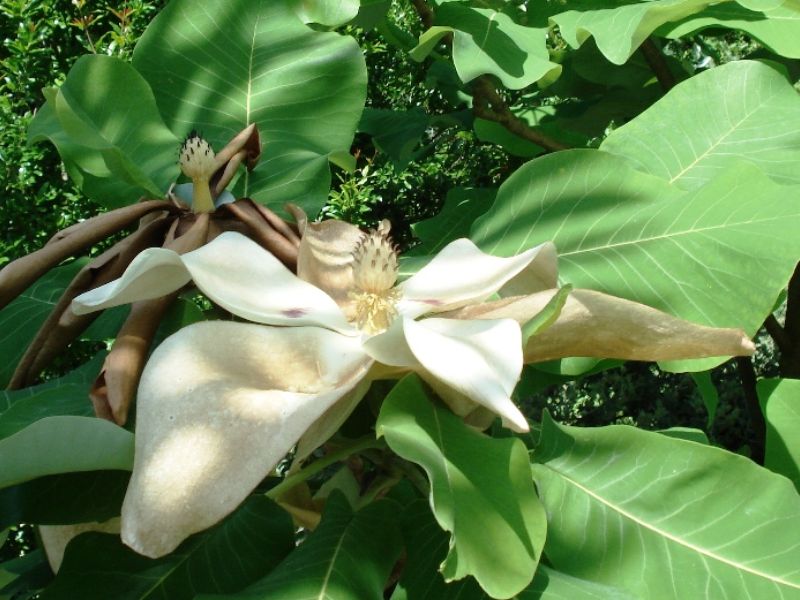
Sowing seeds to grow bigleaf magnolias is possible, but purchasing a young tree from a nursery is easier. If you choose to grow trees from seeds, here is what you need to do:
- Purchase or collect seeds from pods in early fall when the fruit falls.
- Remove seeds from red fruit pods.
- Soak the seeds in water overnight and remove any excess coatings the following day. Use a cloth to help remove the outer layers.
- Place seeds in the refrigerator in an airtight container for up to three months.
- After removing the seeds, plant them in a moist sand or perlite container. Keep the container in indirect sunlight and continue to keep the soil moist.
- When the seedlings emerge, transplant the roots if overcrowded.
- Flowers can take up to 10 to 15 years to emerge, so continue care instructions for seedlings like a tree.
Transplanting
Ideal for transplanting bigleaf magnolia is during late summer to early autumn (S2-S4). This time gives bigleaf magnolia its best start as roots can establish before winter. Choose a location with lots of space and partial shade. Remember, bigleaf magnolia prefers well-drained, acidic soil for optimal growth.
Overwintering
Depending on your region’s climate and preferences, leaving bigleaf magnolias exposed to colder temperatures to “chill” the tree or pruning to promote dormancy are options. In areas of freezing temperatures, protecting bigleaf magnolias is essential. Wrap blankets or tarp around the trunk and branches and add a layer of mulch to insulate shallow roots and the root ball.
Pests and Diseases
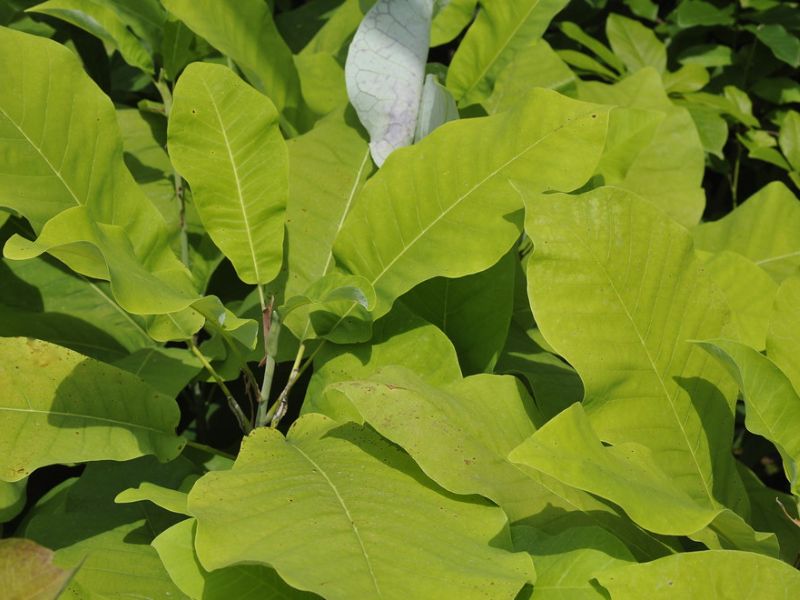
Common Pests & Plant Diseases
While no significant pest or disease concerns exist, bigleaf magnolias are still susceptible to some issues. Leaf weevils are a type of beetle that eats leaves during the spring and summer, but these insects are easy to control by spraying the foliage with an insecticide.
Yellow and brown spots can also affect bigleaf magnolias. Browning can result from a lack of water but can also indicate disease. If caught early enough, spraying a copper-based fungicide will help stop the infection before it attacks the leaves. Yellowing leaves indicate a nutrient deficiency in the soil, so a simple soil test can determine what is needed.
Since bigleaf magnolias feature enormous foliage, protecting them from high winds is one of the best ways to preserve these trees.
Common Problems With Bigleaf Magnolias
Leaves Turning Yellow
Oversaturating the soil is one reason that bigleaf magnolias’ leaves turn yellow. After yellowing, the foliage will wilt and drop off. Mushy stems from overwatering can cause the tree to look dull and unhealthy. In addition to adjusting the watering schedule, ensuring the soil has the right balance of nitrogen and iron with a soil test can help determine the reason behind yellowing leaves. If the soil’s nutrients are unbalanced, adding fertilizer can help get bigleaf magnolias back to health.
Buy Plants

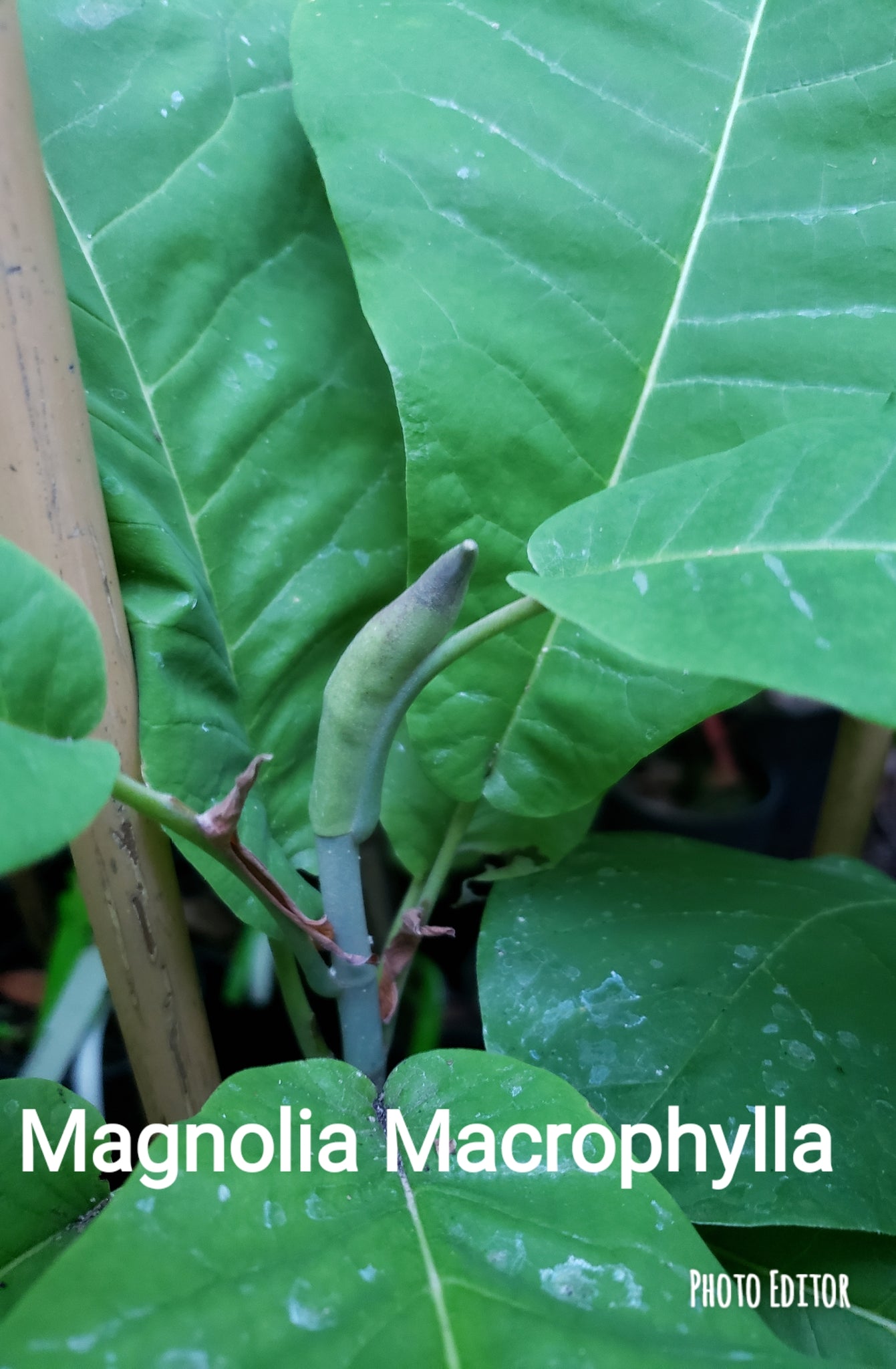
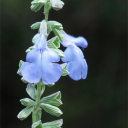
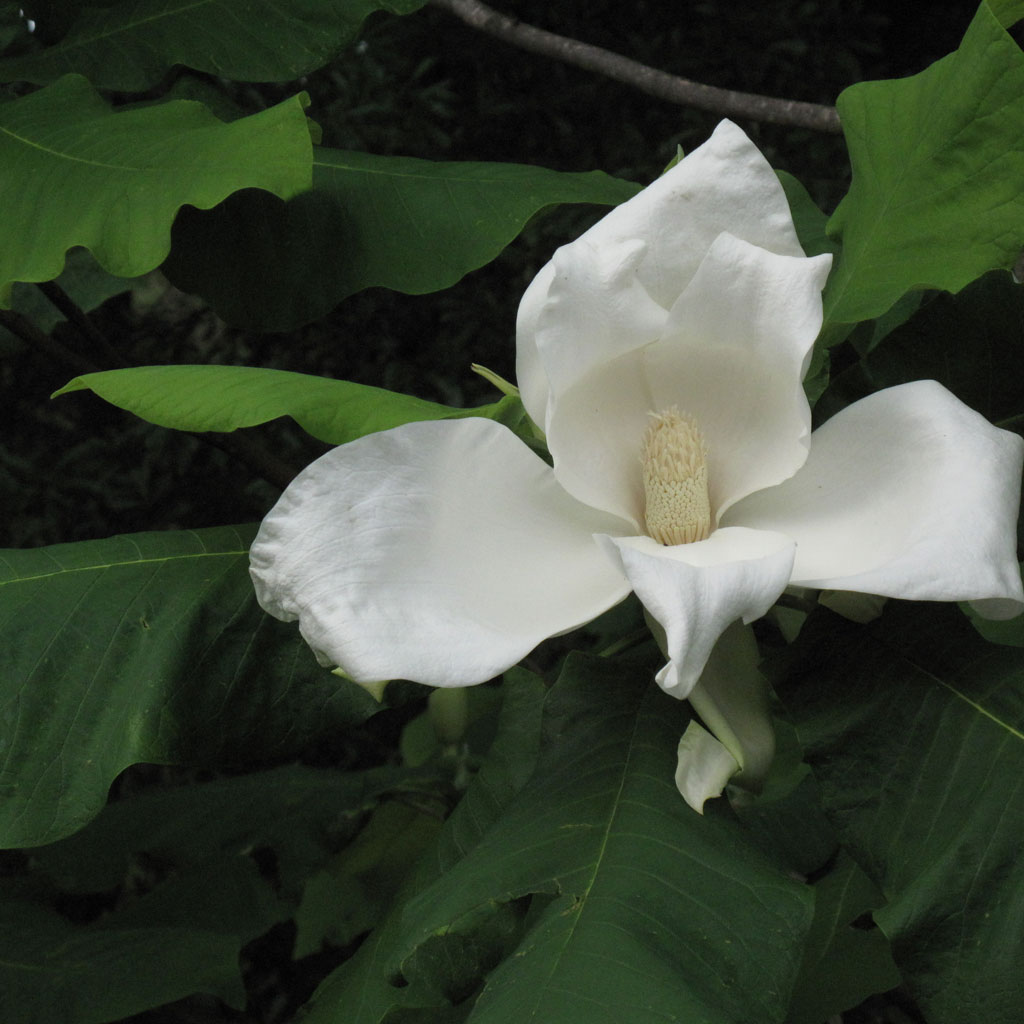



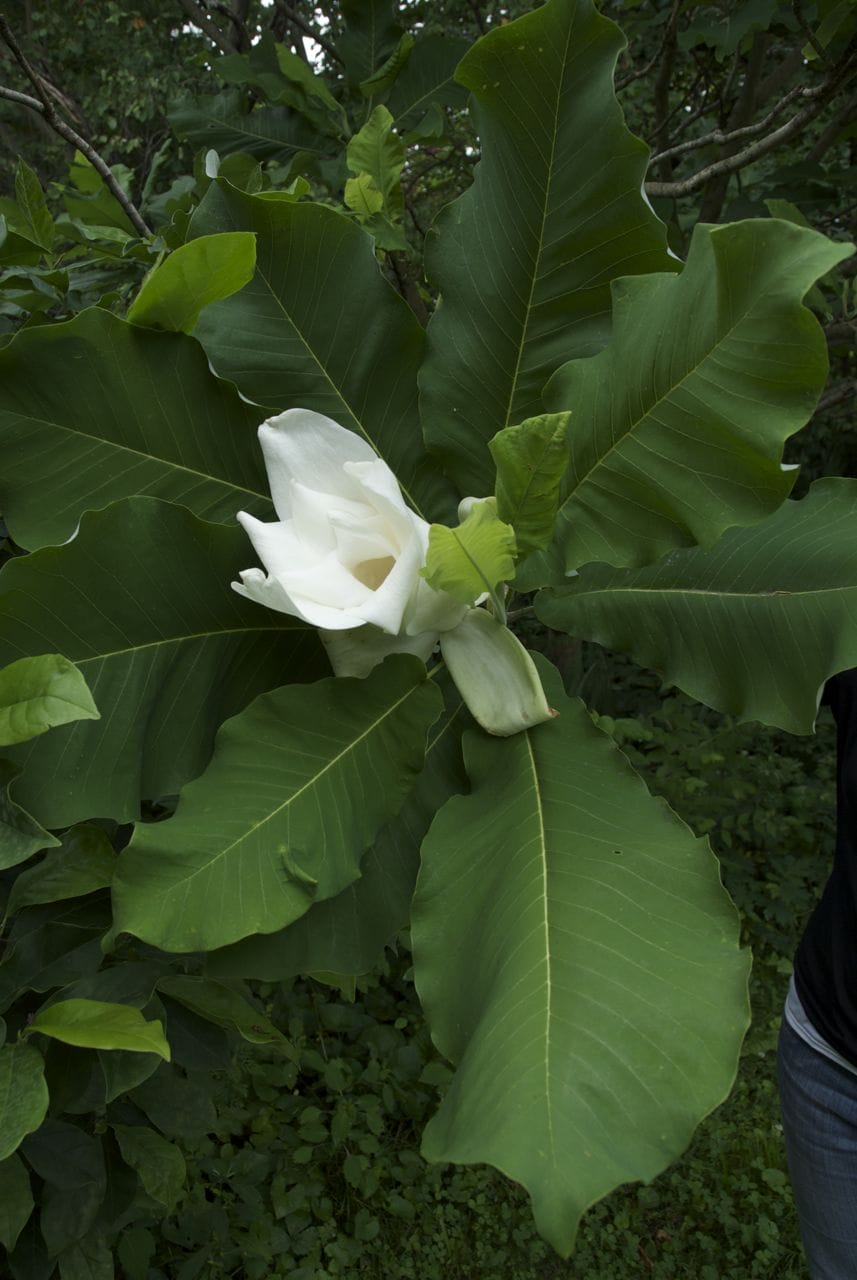

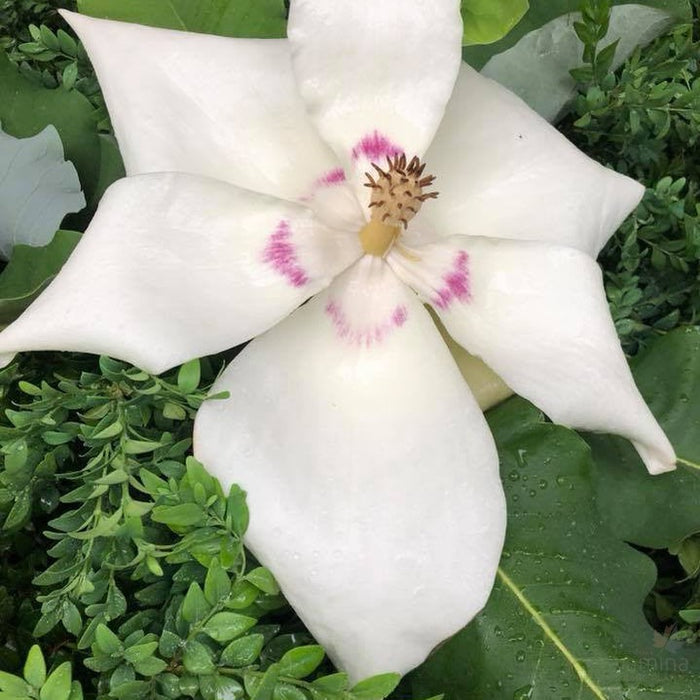
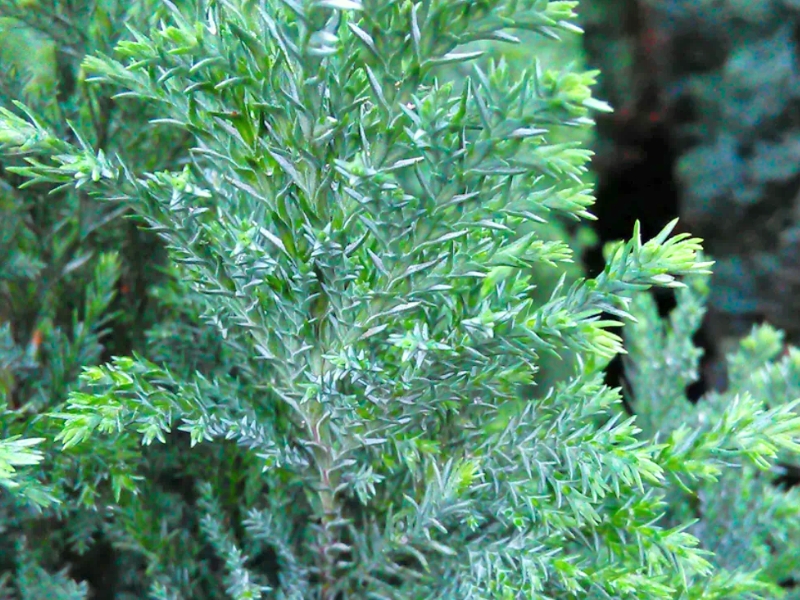
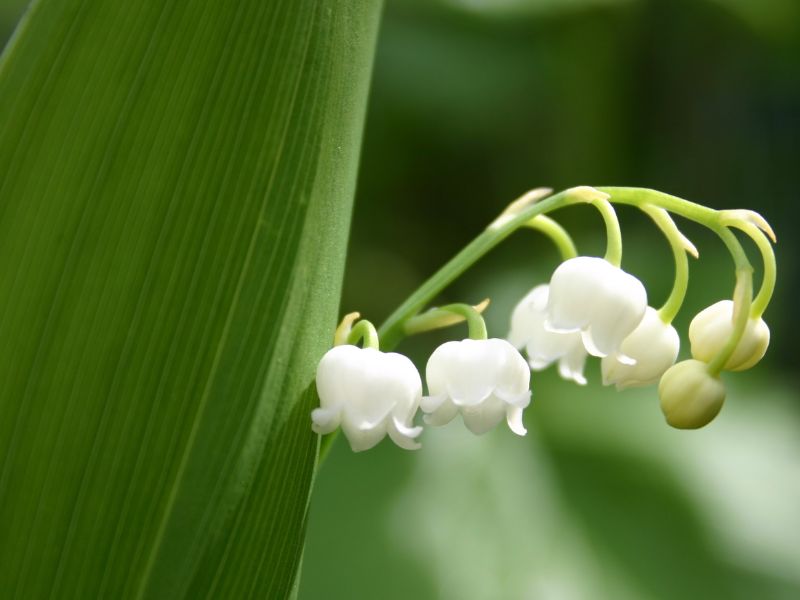
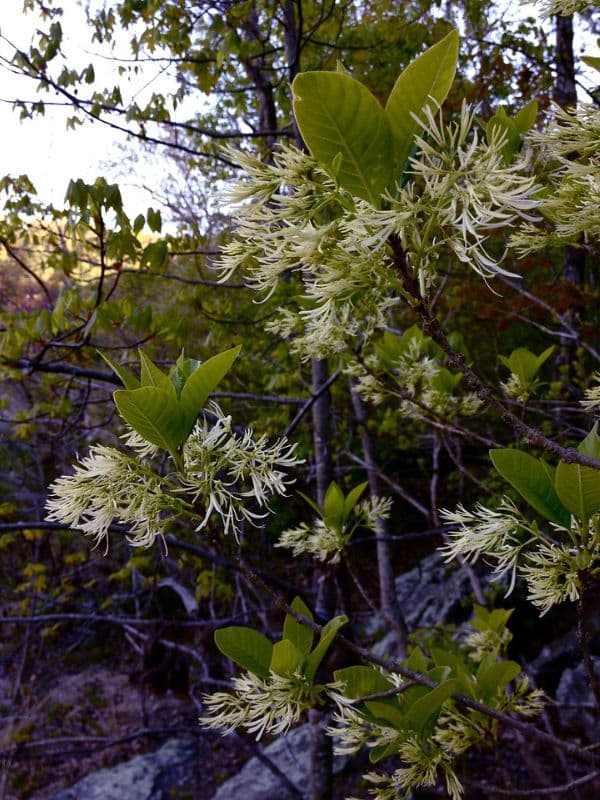
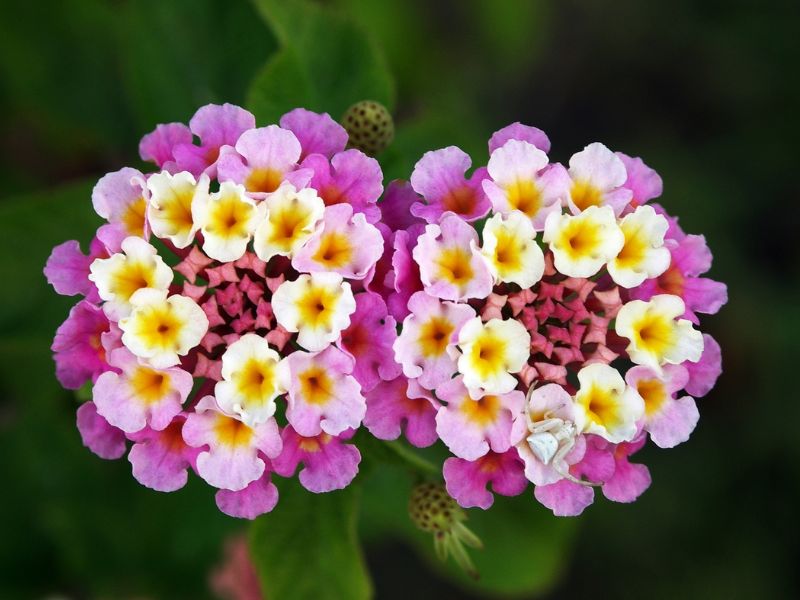
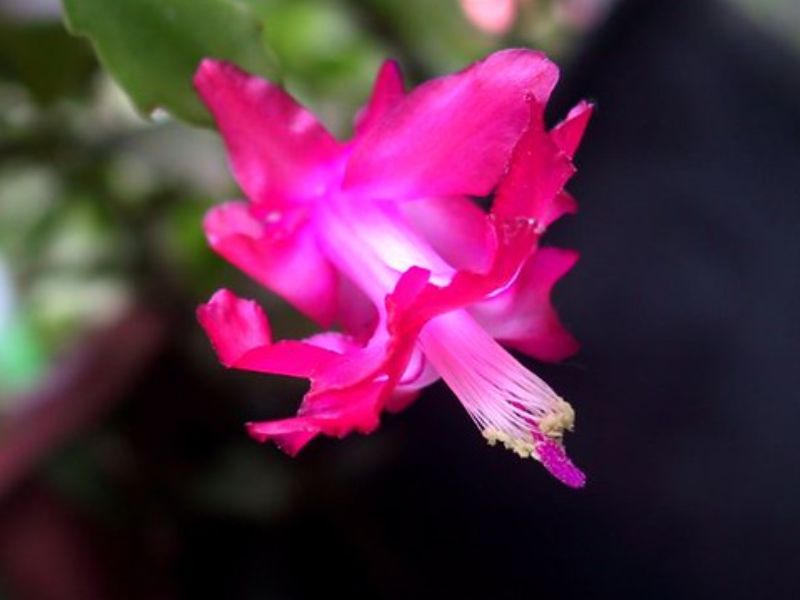
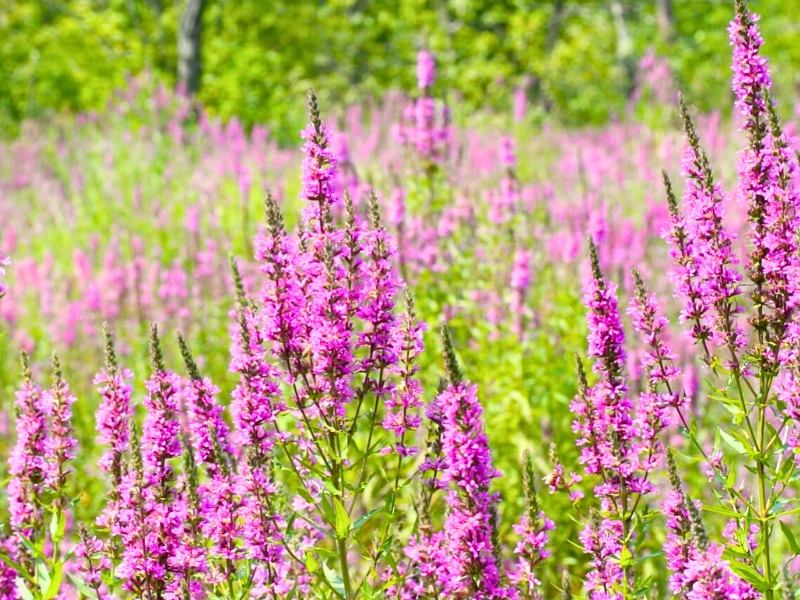
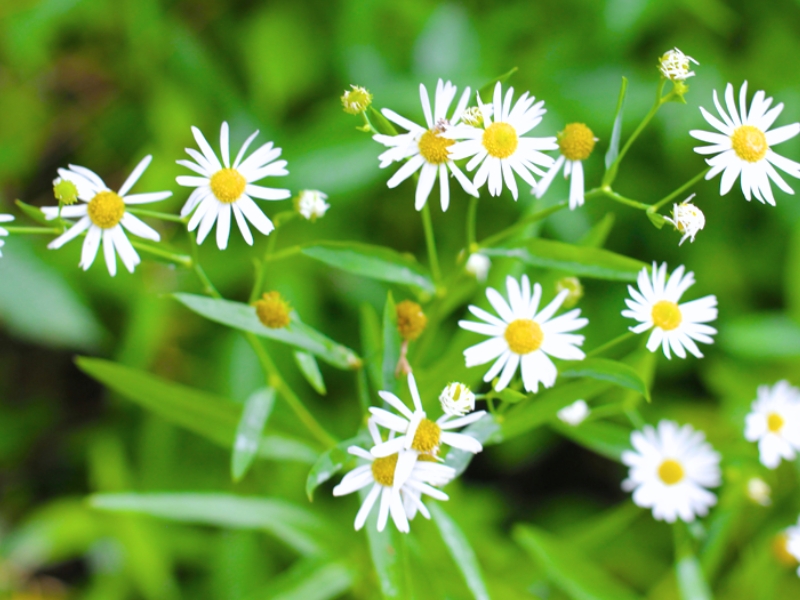
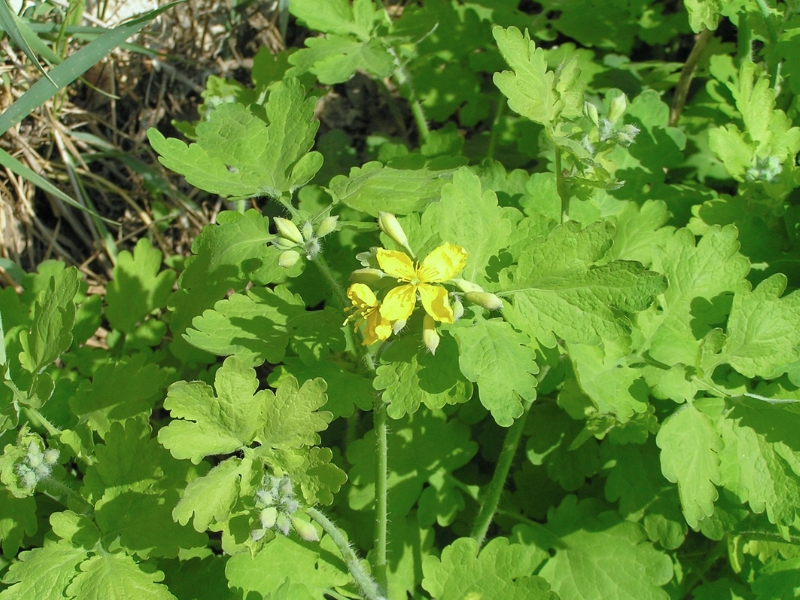
Leave a Reply